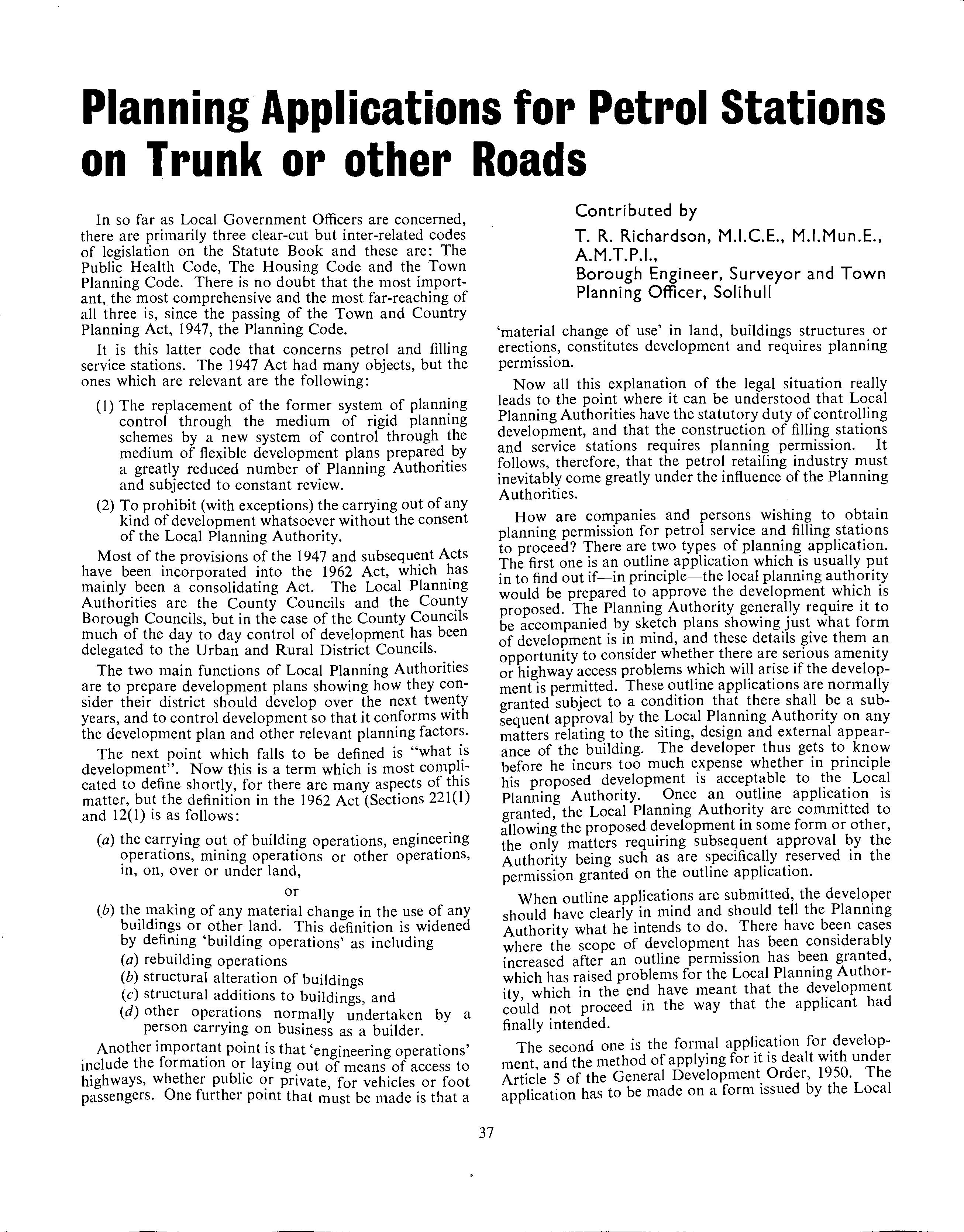
4 minute read
THE STORAGE oF LIQUEFIED PETROLEUM GAs-C. F. BASHFORD
from The Bulletin – April 1966
by apeauk
The Storage of Liquefied
In this article Divisional Officer C. F. Bashford, G.l.Fire E., Senior Fire Prevention Officer to the East Sussex Fire Brigade, describes the workings of an LPG (butane) storage scheme at the Portslade, Sussex, gasworks of the South Eastern Gas Board and tel Is of the co-operation between Gas Board officials and the fire brigade in fire prevention measures.
Advertisement
Petroleum Gas
The South Eastern Gas Board has storage for about 2, 700 tons of butane within the curtilage of the Portslade Gas Works which are on a peninsula from 350 yards to 400 yards wide forming part of the southern enclosure of the eastern area of Shoreham Harbour. This area of the harbour is gained via locks from the tidal harbour entrance. The ~e~ainder o~ the peninsula is occupied by a large electnc1ty generatmg station, an oil depot, transit sheds and warehouses.
Across t~e harbour water from the gas works, about 290 feet distant, are major petroleum depots, timber storages, etc. There is continuous traffic of cargo and small pleasure boats on the harbour water.
A semi-public wharf road runs the full length of the northe~n boundary ?f the gas works and the only means of vehicular access is from the main road at the eastern end of the wharf road.
Horizontal tanks . The storage of butane commenced in 1960 with the mstallation of six horizontal pressure tanks each of 60 tons capacity sited near the centre of the works about 70 feet f~om the north boundary, the butane being' used for additional gas production and enrichment of town gas. 1:he butane storage has now been increased by three horizontal 90 tons capacity tanks near the existing six tanks and a 2,000 tons refrigerator tank near the western end. of the works. The increased storage is necessary for use ma new. Hydrocarbon Reforming plant that has been constructed Just east of the butane pressure storage area. . The ~ef~igerated tank is sited in an area containing four hght .distillate feed-stock (LDF) tanks having a total capacity of 1,800,000 gallons. There is a set of gas purifiers about 150 feet south of the tank.
Product lines (butane and LDF) between the storage areas, and bet~een the storage area and the reforming plant, are earned boundary wall. at a high level just inside the north
Ship tanker
Initially,. butane supplies were received by road tankers but the mam supply is now by ship tanker carrying up to 500 tons. '!'~~ amo.unts being governed to' some extent by storage facthtles. the harbour. Oil tankers up to 1 400 , t ons ·t capac1 y use
Separate off-loading wharves have been constructed for butane and LDF and fixed _Product lines from the wharf to the works have been buried under the wharf roadway.
From the outset there has been the fullest co-operation from officials of the South Eastern Gas Board. In fact, the initial invitation to join in discussions on fire safety was received by the fire brigade from the Gas Board and several of the measures adopted were suggested by Gas Board officials.
The pressure tanks are enclosed in a concrete surfaced area. A concrete wall surrounds the area and the height of the wall is greater on the south side to provide protection for persons operating the drencher valves. The area under each tank is designed to slope to a gulley and the gulleys drain to a pit, capacity about 6,400 gallons. The water table of the harbour has governed the depth of the pit. A fire-resisting shield has been erected round part of the pit to screen the pit from the storage tanks. The design of the compound :flooring will limit the surface area of free liquid should a leak occur.
Drencher pipes run the length of each side of each tank, and the drenchers are supplied by a static 1,200 g.p.m. diesel-engined pump, permanently set into the waters of the harbour. There is a duplicate pump of greater capacity coupled to the dry main.
The road tanker off-loading concreted area slopes towards the wharf. Drenchers are being considered to cover the standing area for road tankers.
Safety relief valves, excess flow valves and Shand-jurs remotely operated hydraulic valves have been fitted to tanks and pipe lines where considered necessary, and a responsible person is always in attendance at the storage when tanks are being replenished.
Ventilation
The refrigerated tank is sited in a very large surface area compound which would contain more than the contents of the tank. The compound area was made large to provide as much ventilation as possible to disperse vapour from any small leak. There is a two-foot high wall encon~passing the tank within the compound! th.e purpose of this wall being to limit the area of free hqmd should ~ leak_ occur. This small compounded area has a capacity ot about 89,000 gallons.
Drenchers are fitted and give a flow of 10 gallons per square foot per hour over the whole of the tank top ~nd the northern half of the tank shell, that is, the area facmg the LDF storage. The drenchers are supplied by the pumps mentioned above.
Because of the possibility of danger to the i1m~lation of the tank the normal requirements for a capacity water test on the compound was relaxed and the compound was water tested to a height just below the base of the tank.
35










